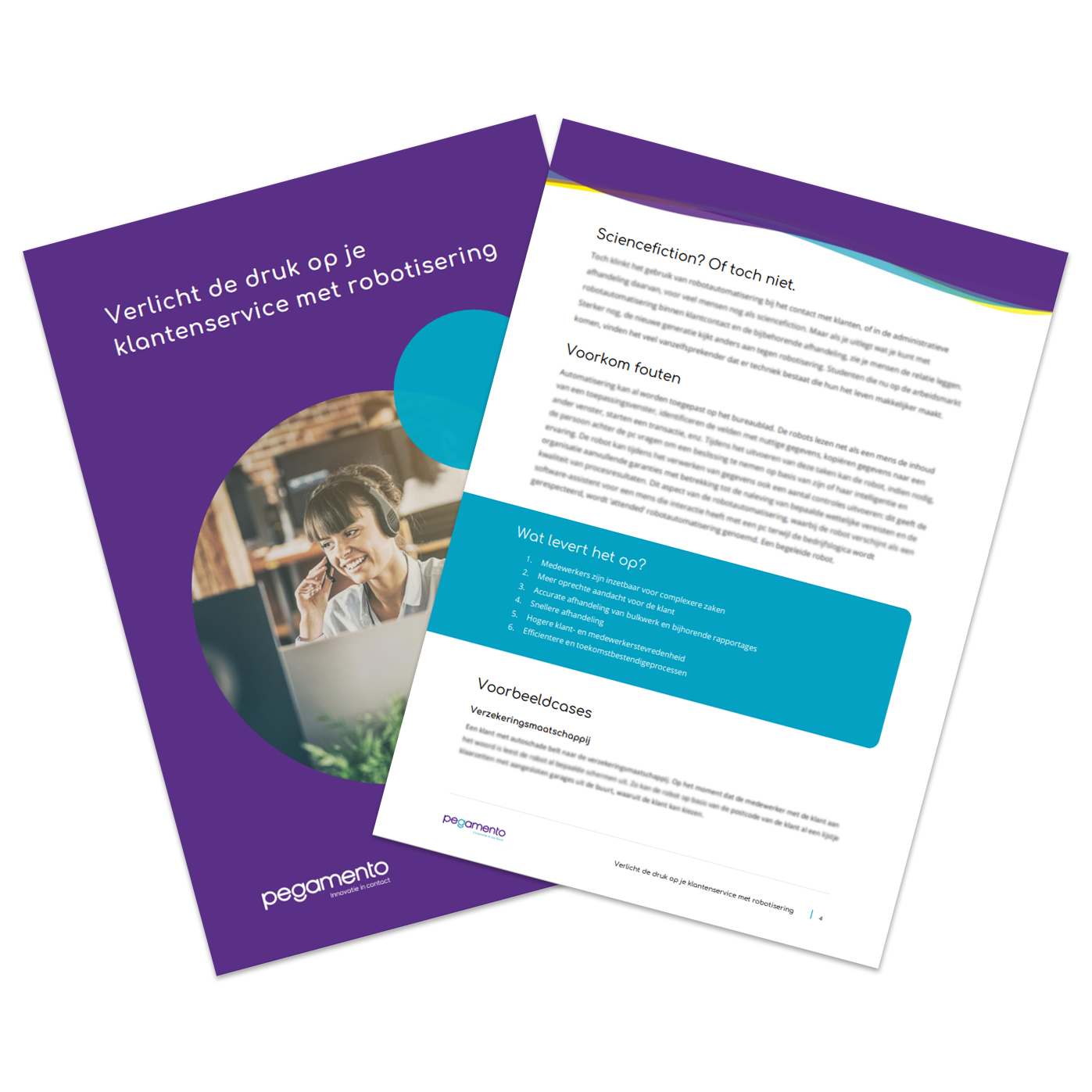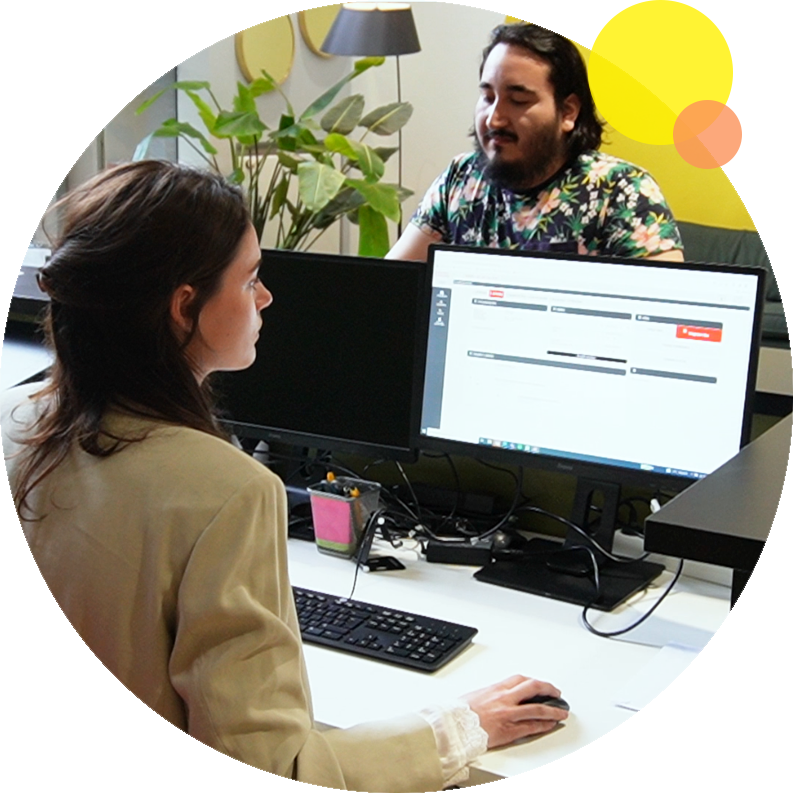Robotisation is a form of automation where an increasing number of tasks are performed by software robots, also referred to as Robotic Process Automation, a computer robot. In this case, it mainly concerns repetitive and boring tasks that employees perform. Indeed, within an organisation, employees often spend many hours on these types of tasks. The essence of robotisation is that tasks are taken out of employees' hands, giving them more time for more important activities. But exactly what kind of repetitive and boring work are we talking about? And how does RPA take it over?
The virtual employee
An example of a repetitive task that RPA takes out of people's hands and automates is the scanning of a PDF file. There is, as it were, an invisible robot inside your computer that takes over all the checking and copy-paste work from you. Suppose a company receives invoices from external workers in PDF files via email. The RPA software extracts the PDF files from the emails. It then checks whether the sender is known and reads the PDF, then checks the data. Is everything correct? Then it prepares the payment in the payment system. All that an employee has to do is approve the payment. This is just a simple application of robotisation.
You can also think of it as a virtual employee working alongside your employees within the organisation. Besides scanning a PDF file, it can also help you with other things. Examples include making calculations, filling in forms, opening emails, and creating and moving files. RPA software is mainly suitable for taking over routine and repetitive operations.
You might also be interested in reading the following: A look into the (fascinating) world of RPA software.
Unattended and attended RPA
Within Robotic Process Automation, a distinction is made between two types of RPA solutions: managed robots (attended) and unmanaged robots (unattended). It is good to know the difference between these two, as they both have different applications. To paint a clearer picture, we will also highlight a few case studies.
What is attended RPA?
Attended robots support employees in a virtual manner. The software robot is therefore dependent on the employees. This type of robot needs direction from a human to actually perform something automatically. For example, when an employee asks the robot to look up information, such as customer details. This eliminates the need for the employee to search across all systems themselves. In this case, the robot supports the employee in the performance of their tasks. In short, attended robots are used as a virtual assistant to employees, as the employees determine when the software will perform a specific action. This application is especially suitable for use in front-office work at, for example, a call centre, customer service centre, or help desk.
Here are a few examples of attended RPA:
What is unattended RPA?
In the case of the unattended robot, the robot is (almost) completely independent of the employee and can, in most cases, function without the help of a 'real' employee. This type of RPA robot can initiate action and perform work on its own. And it can do so 24/7. The only time an employee becomes involved is if the software encounters errors in the operations it is supposed to perform, for example if data in a document is incorrect.
Unattended robots are most commonly used for back-office work, such as collecting, sorting, analysing, and forwarding data and information. An example is a company that receives many requests daily and needs to process them. The software automatically grabs the request from the mailbox and processes the data in the system without the intervention of an employee.
Here are a few examples of unattended RPA:
Curious to know how and what our customers have robotised? Read our customer cases.
Robotic Process Automation and the biggest advantage
Apart from the fact that employees no longer have to perform the boring and repetitive tasks, there is another big advantage of RPA. Almost any application can be connected or merged with RPA software. Thus, it can be applied to new applications as well as older applications or programs. It is therefore not necessary to introduce costly ICT systems, because the robot is a digital collaborator that does not require complex coding and APIs. This ensures that RPA can be deployed anywhere and that an appropriate solution can always be found.
The repetitive and boring tasks you can robotise
Robotic Process Automation can be used for many repetitive tasks and therefore for many purposes within an organisation. It can copy, paste, move, update, retrieve, register, mutate, and do other similar work. The software ensures that quality and productivity are increased within the organisation. Consider the fact that a robot is less error-prone, works faster than a human, and has higher availability than 'real' employees. There is a positive consequence for employees as well, as employee satisfaction is increased as a result of RPA deployment and employees have time for more important tasks, such as real personal customer contact. Perhaps it is the ideal solution to staff shortages? Who knows. In short: the virtual RPA employee takes over routine and repetitive tasks from your employees, allowing them to do what they were hired to do.
Lighten the workload with robotisation
This may look like the future, but in various organisations it is already a reality. However, most organisations are still losing a lot of time as they work with different applications and repetitive work within their business systems.
Download the free white paper and find out what robotisation could mean for your organisation. Checklist included.





